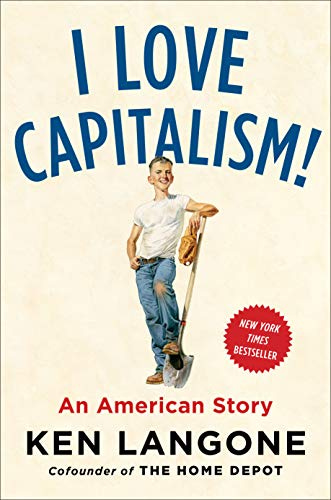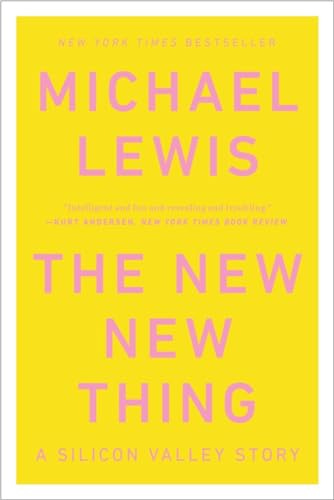A Japanese Monk’s Simple Lesson on Time and Change
Three books can change your Thursday. One book can change your world.
Hello,
I just returned from Japan.
It was my second time there, and I’ll say this again: if you’ve never been, go. At least once in your life. It’s a place unlike any I’ve ever visited. The kind of place that doesn’t just show you things—it teaches you things. Quietly. Gently. Without trying to.
Japan holds a rhythm all its own. Ancient temples and futuristic toilets. Sake bars and Zen gardens. It’s a country that’s adapted to the modern world without surrendering its soul. Walking through it felt like walking through a poem—each street a stanza, each shrine a verse.
And in the middle of this poetic chaos, I found myself sitting across from a Buddhist monk.
My list for the trip was mostly food, sake, and wandering the neighborhoods of Tokyo and Kyoto. But one morning, I accepted an invitation to visit a temple. I was met by a guide who walked me through its history and customs, and then I was introduced to the monk—a gentle man in his sixties who had the kind of presence you notice before he even speaks. Through a translator, we began to talk about meditation.
Now, I’m not a formal meditator. I don’t sit cross-legged on cushions or use apps that track my breath. But I do meditate—I just never called it that. I find it on long walks, park benches, early mornings with coffee. Quiet moments where the world softens and the noise goes dim.
Still, I figured—when in Japan. So I agreed to sit with him.
He lit a single candle and placed an incense stick beside it. The room was still. He asked me to look at the flame, then follow the smoke rising above it.
“Watch it,” he said. “Not just once. Every second.”
The smoke twisted and curled above the flame. Sometimes straight. Sometimes erratic. It shifted with every breeze in the room, every beat of air. And then he said something memorable:
“Appreciate the change. That is life. Every moment, different than the last. Different from the next. This moment you are in—it is the only one like it. You will never get it again. So notice it. Fully. And then… let it go.”
It made sense at the time. It was a beautiful metaphor.
The next morning, waking up in my hotel room, something deeper clicked.
It wasn’t about how fleeting life is. I already know that. I’ve watched enough last breaths in the ER to know how short our time can be.
No, this wasn’t about death. It was about aliveness.
It was about this second. This exact heartbeat.
I realized how much of my life is spent somewhere else—thinking about what’s next, what needs to be done, what I’m becoming. But that monk reminded me that the only time I truly own is the one I’m in.
That’s what meditation is, I think. Not the posture or the breathing—but the noticing. The stillness inside the motion.
And I’ve been thinking about that candle ever since.
The smoke rising above it, never the same shape twice.
Just like us.
Welcome to this week’s Three Book Thursday.
1. Memoir
I Love Capitalism!: An American Story
Summary
I Love Capitalism!: An American Story is more than a memoir—it’s a raw, unapologetic celebration of hustle, grit, and belief in possibility.
I picked up this book for a personal reason. I did my emergency medicine residency at NYU—NYU Langone—and for years, I wondered about the “Langone” behind the name. Who was he? What did he build? How did his story unfold?
This book answered all of that—and more.
Ken Langone is best known as one of the co-founders of Home Depot, but what makes his story extraordinary isn’t just the scale of his success. It’s where he started. Born to working-class parents in Roslyn Heights, Long Island, Langone wasn’t handed anything. No trust fund. No fancy degrees. Just a willingness to outwork everyone around him and a deep respect for relationships—especially the kind built on loyalty, integrity, and doing the right thing when no one’s watching.
What struck me most was his clarity. Langone never pretends to be perfect, but he owns his story—every bet, every loss, every fight, every win. And that honesty is rare. Whether he’s reflecting on his role in taking companies public, navigating backroom boardroom drama, or standing up for the underdog, he brings you inside his world with the same boldness that made him one of Wall Street’s most influential figures.
But this book isn’t just about business. It’s about identity. About values. About legacy. Langone shows us that capitalism, when done right, isn’t just about profit—it’s about people. It’s about giving back, paying forward, and lifting others as you rise. He doesn’t see success as something to hoard—he sees it as something to share.
For anyone who’s ever built something from scratch—or dreamed of doing so—this book is fuel. It’s a blueprint for boldness, a field guide for doing business with heart, and a playbook in what it means to bet on yourself—and win.
Favorite Quote, Insight, & Principle
Quote: “A kid once said to me, "Money doesn't buy everything." I said, "Well, kid, I was poor, and I can tell you right now, poverty doesn't do a very good job either."”
Insight: You don’t need permission to chase your dream, you just need the guts to start.
Principle: If you believe in something deeply enough, you fight for it—even if everyone else walks away.
Author: Ken Langone
Themes: Memoir, Entrepreneurship, Economics, Wealth creation
2. Entrepreneurship
The New New Thing: A Silicon Valley Story
Summary
The New New Thing isn’t just about Silicon Valley—it’s about the spirit of reinvention. It’s a book about chasing what’s next before anyone else even sees it coming.
Michael Lewis, in his usual brilliant, observational style, gives us a front-row seat to the rise of tech culture at the turn of the millennium. At the center of it all is Jim Clark—an entrepreneur not content with building one billion-dollar company. He wanted to build three. Or more. He started Silicon Graphics, then Netscape, then Healtheon, each time redefining not just an industry, but the nature of ambition itself.
What struck me wasn’t just Clark’s restlessness—it was his pattern: see something the world hasn’t noticed yet, build fast, and never look back. Clark wasn’t a manager. He was a builder. An engineer of disruption. A man so allergic to stillness that even his yacht—a literal floating mansion—had to be wired with real-time tech to satisfy his need for speed, precision, and control.
And that’s the heartbeat of the book: the new new thing. That moment just before a breakthrough becomes obvious. That whisper of a possibility before it’s a headline. Lewis captures the people who live in that space—between innovation and instability, confidence and chaos—and it’s a place that should feel familiar to anyone who’s built something, risked something, or tried to change something.
Reading this reminded me that the edge—the uncomfortable, untested, unproven—is where growth happens. It’s messy. Uncertain. But it’s also where possibility lives.
Whether you’re in medicine, business, research, or leadership, the lesson here is clear: the world doesn’t stop moving. And if you want to matter in it, you have to be willing to break the mold, to move fast, to bet on what’s not obvious—and to trust that boldness, curiosity, and discomfort are the prerequisites for impact.
The New New Thing isn’t about tech. It’s about mindset. And it’s a powerful reminder that the future doesn’t arrive fully formed. It’s built—by those crazy enough to start early.
Favorite Quote, Insight, & Principle
Quote: “The best technology is indistinguishable from magic.”
Insight: Most of them are no more interesting than you and me. You have to trust me on this (Lewis on billionaires).
Principle: The people shaping the future rarely wait for permission.
Author: Michael Lewis
Themes: Entrepreneurship, Running a business
3. Memoir
Eyewitness To Power: The Essence of Leadership Nixon to Clinton
Summary
Eyewitness to Power is a study in leadership under the highest pressure, with the greatest stakes, written by someone who stood close enough to feel the heat.
David Gergen served in the White House for four presidents—Nixon, Ford, Reagan, and Clinton—and advised a fifth, George H. W. Bush. He had a front-row seat to power, watching how leaders lead, how they fall short, how they rally, how they fail. But this isn’t a gossip memoir. It’s a blueprint. A search for the essence of what real leadership looks like, stripped of spin and self-deception.
What struck me most was how different these presidents were—and yet how much their effectiveness came down to a few core things: moral compass, emotional control, clarity of vision, willingness to listen, and the ability to build a team that could both challenge and execute.
Gergen doesn’t romanticize anyone. Nixon was brilliant but paranoid. Ford was decent but lacked vision. Reagan communicated with unmatched skill, yet delegated to the point of disconnect. Clinton was dazzling in intellect and charisma—but undisciplined. And yet, in each of them, you find pieces. Strengths and blind spots. Gifts and gaps. And the thread that runs through all of it? Character. Leadership always bends back to character.
Reading this, I couldn’t help but think about the people I’ve worked with—in hospitals, in business, in coaching—and how often leadership falters not from lack of skill, but from lack of self-awareness. Gergen’s reflections offer a reminder that being in charge doesn’t make you a leader. But how you carry the weight of responsibility might.
For anyone managing teams, guiding organizations, or even just navigating their own ambition—this book delivers. It’s a mirror. A caution. A call.
We live in a time that desperately needs better leadership—not just in politics, but in every field. And Eyewitness to Power offers more than nostalgia or critique. It gives us a framework. A chance to ask: What kind of leader am I becoming?
And maybe more importantly—what kind of leader do the people around me need?
Favorite Quote, Insight, & Principle
Quote: “It is a riddle wrapped in a mystery inside an enigma.” -Winston Churchill
Insight: The measure of a leader, it is said, is the shadow he leaves behind.
Principle: Leadership is less about charisma and more about clarity.
Author: David Gergen
Themes: Memoir. Politics
The candle, the smoke, the moment—what the monk reminded me is this: presence fuels purpose. Langone’s grit, Clark’s reinvention, Gergen’s leadership—they all stem from people showing up fully in the moment they’re in. Not distracted. Not scattered. But clear, focused, and alive in the now. You don’t need to meditate to be mindful. You just need to notice what’s in front of you—and choose to engage with it like it matters. Because it does. The next breakthrough, the next win, the next insight—it starts right here. In this second. This breath. This heartbeat.
Always ❤️📚💡
Three Book Thursday is free, but there are many costs to create these posts each week. So, can you do me a favor?
If you find value here, please support the newsletter.
Please share Three Book Thursday with a friend, college, family member, or post it to your socials. I’m working hard to grow this audience, but let’s be honest—you’re probably better at it than I am.
Or, do both!






